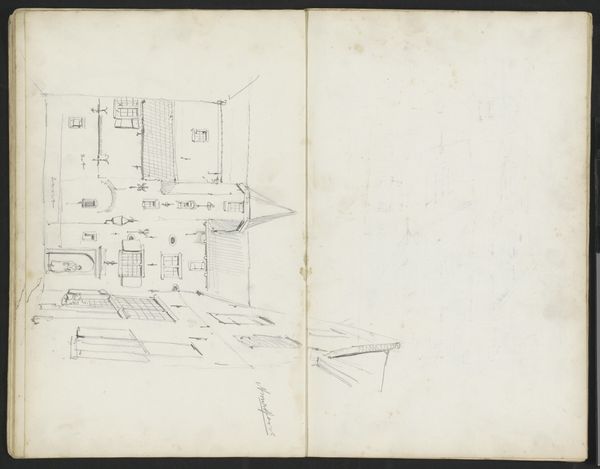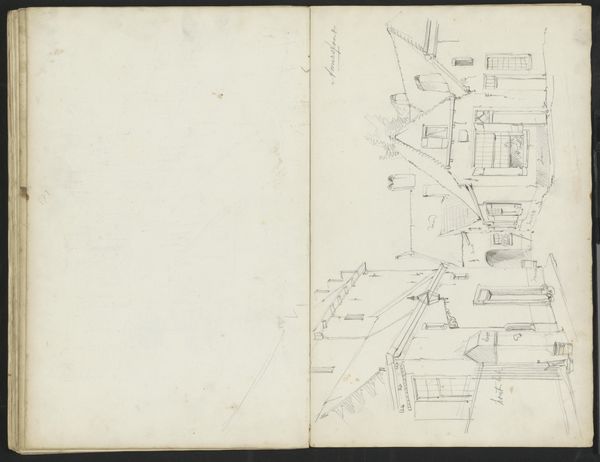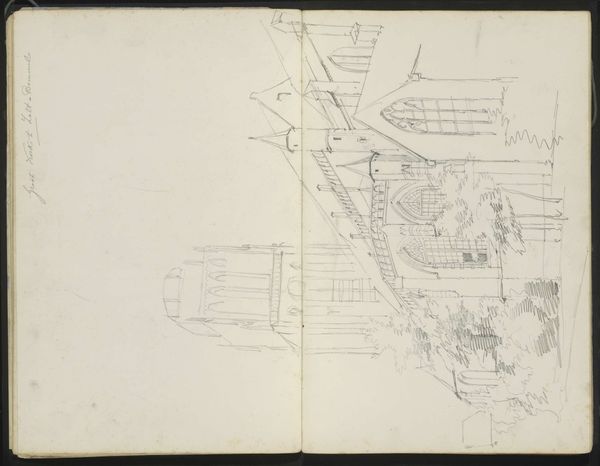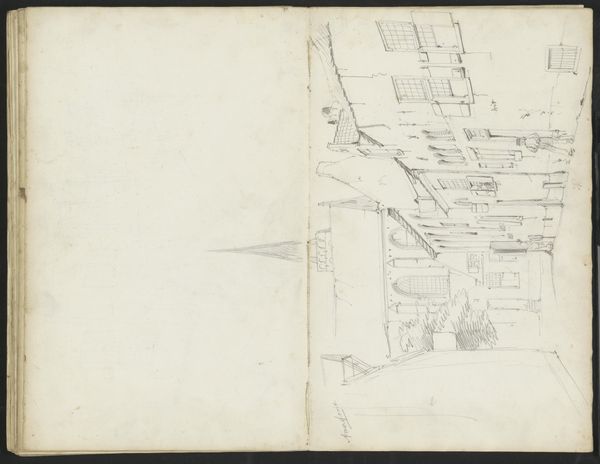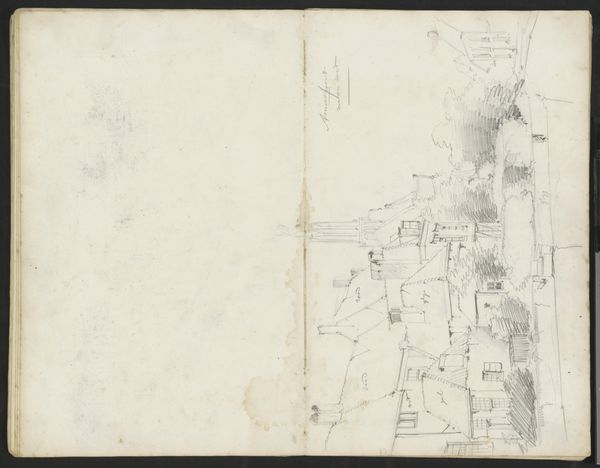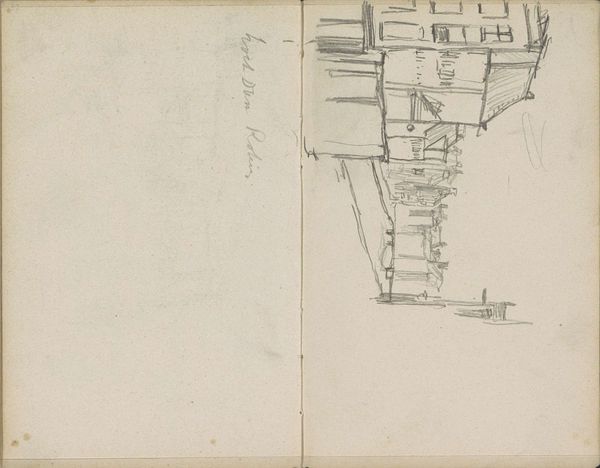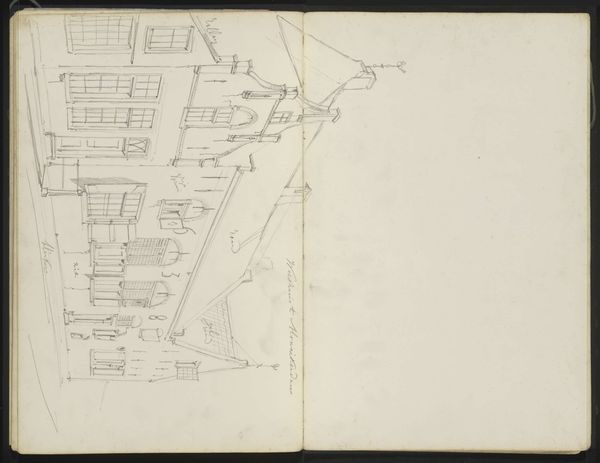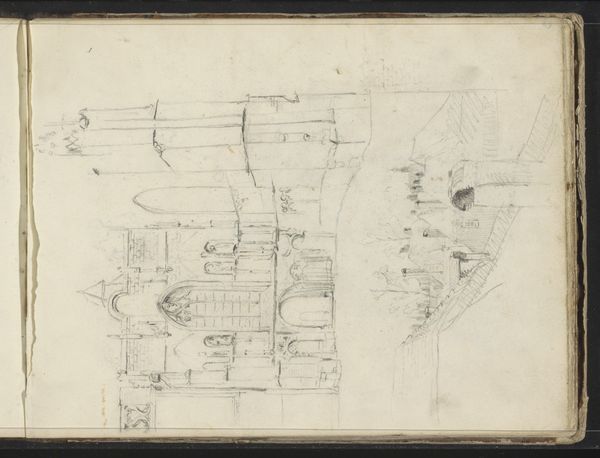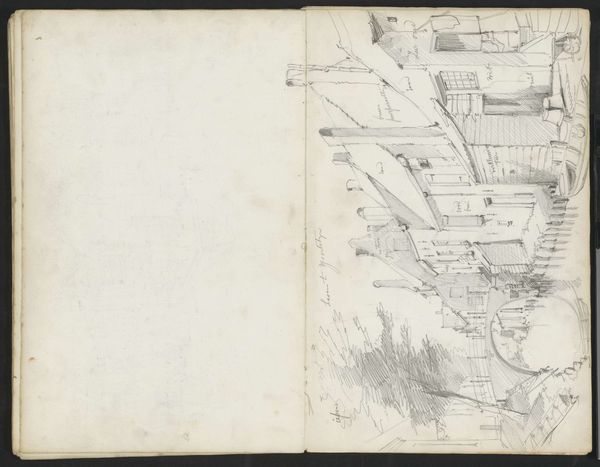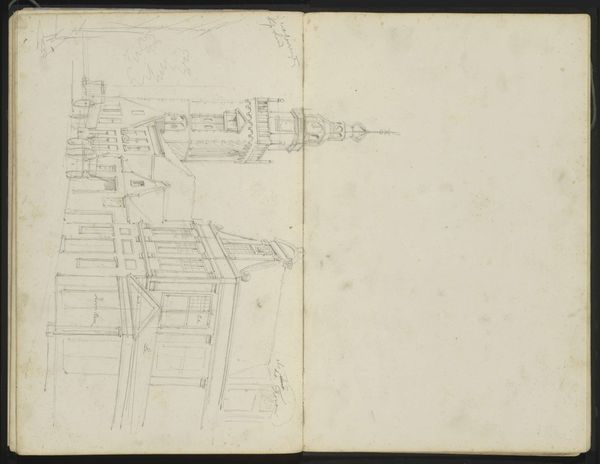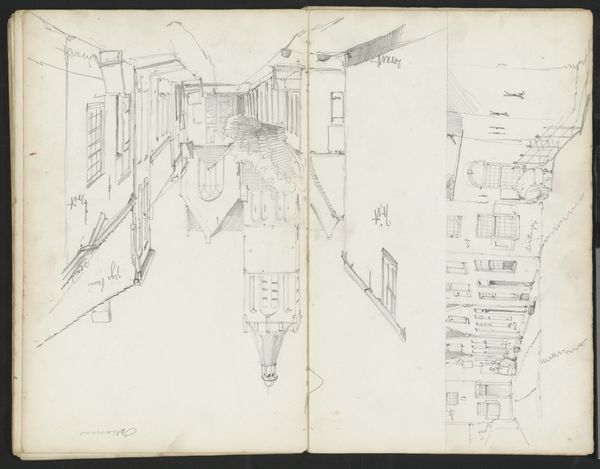
Gezicht op de Plompe- of Dieventoren aan de Muurhuizen te Amersfoort 1849 - 1895
0:00
0:00
drawing, pencil
#
drawing
#
aged paper
#
quirky sketch
#
dutch-golden-age
#
pen sketch
#
sketch book
#
hand drawn type
#
landscape
#
personal sketchbook
#
pen-ink sketch
#
pencil
#
pen work
#
sketchbook drawing
#
cityscape
#
sketchbook art
#
street
#
building
Copyright: Rijks Museum: Open Domain
Editor: Here we have Willem Koekkoek's "Gezicht op de Plompe- of Dieventoren aan de Muurhuizen te Amersfoort," a pen and pencil drawing from sometime between 1849 and 1895. It’s currently held at the Rijksmuseum. The sketch feels so immediate, almost like a page ripped straight from the artist's sketchbook. What do you see in this piece? Curator: I see echoes, the persistent visual motifs of Dutch urban identity being formed and reformed over time. This Plompetoren, or Dieventoren, clearly held significance, becoming a cultural symbol. Notice how the tower dominates the composition, but it is the Muurhuizen, the houses built into the old city walls, that gives us a psychological insight into the lives of the Dutch citizens who transformed defensive architecture into homes. Do you notice the absence of figures? Editor: I do, it feels so empty for a cityscape! It definitely puts the focus on the architecture. Curator: Exactly. It lends the scene a dreamlike quality, suggesting the tower and its houses represent something beyond their physical presence. Think of the Tower of Babel - verticality often reflects a psychological aspiration towards the heavens, or a reach for something just beyond grasp. Perhaps here, Koekkoek uses the tower to examine collective ambition. The imposing tower dwarfs everything around, becoming a symbolic keeper of time, memory, and the ever-shifting cultural narratives within its walls. Editor: That’s fascinating! I hadn't considered how the building itself could be a vessel for cultural memory. Curator: And it isn't just *a* building, but the tower specifically—a form with a long symbolic history. It makes me wonder what meanings future generations will find in our own architectural landmarks. Editor: It makes you consider how we are writing those narratives right now. Thank you so much!
Comments
No comments
Be the first to comment and join the conversation on the ultimate creative platform.
